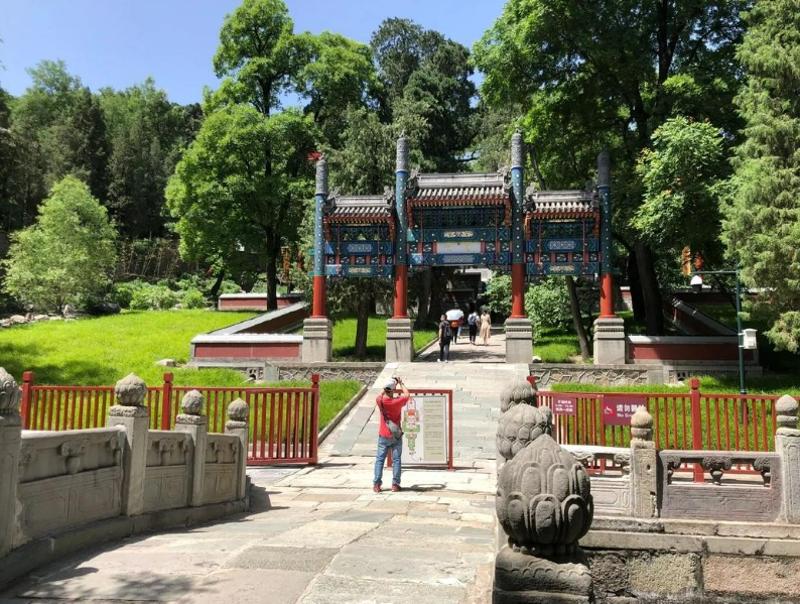Historical Events of Fragrant Hills Park, Beijing
Beijing's Fragrant Hills Park is a place steeped in history, bearing witness to numerous rich historical events and cultural legacies. The park was originally established in the year 1186 during the Jin Dynasty and underwent expansions during the Yuan and Ming Dynasties. In 1745, Emperor Qianlong of the Qing Dynasty ordered the construction of palaces, pavilions, and gardens within the park, renaming it as the "Tranquil Flower Garden."

Here is a detailed account of its historical events:
1.Name and Geographic Location:
- Name Origin: The Chinese name "香山" (Fragrant Hills) likely derives from the name of its highest peak, Xianglu Peak. The character "香" (fragrant) here refers to the aroma, not the spice itself. Incense burners are common in temples, symbolizing ritual and symbolism.
- Geographic Location: Situated at the foot of the Western Hills in Beijing's Haidian District, it enjoys a picturesque surrounding environment.
2. Historical and Cultural Background:
- Establishment Period: Fragrant Hills Park was founded in 1186 during the Jin Dynasty as a historical imperial garden. It underwent expansions during the Yuan and Ming Dynasties, gradually developing its scale.
- Reconstruction during the Qianlong Period: In 1745, Emperor Qianlong of the Qing Dynasty ordered expansions and renovations within the park, adding palaces, pavilions, and gardens. It was renamed as the "Tranquil Flower Garden," becoming an imperial retreat for Qing emperors.
- War and Destruction: During the Second Opium War and the Boxer Rebellion in 1860, Fragrant Hills Park suffered extensive damage, with many buildings and landscapes being destroyed.
- Modern Restoration and Development: Since 1949, the Chinese government has continuously restored and developed Fragrant Hills Park, transforming it into an important cultural tourist destination.
3. Introduction to Fragrant Hills Hotel
Fragrant Hills Hotel is an important architectural landmark within Beijing's Fragrant Hills Park, characterized by its rich historical background and unique architectural features. Here is a detailed introduction:
- 1. Location:
Within the Same Area: Fragrant Hills Hotel is situated within Fragrant Hills Park in Haidian District, Beijing, closely connected to the park itself. Its location serves as a significant landmark within the park, providing convenient accommodation and resting facilities for visitors.
- 2. Architectural History:
Year of Construction: Fragrant Hills Hotel was built in 1982 and designed by the renowned architect Ieoh Ming Pei. It marks his first commissioned project in China, holding significant importance in architectural history.
Historical Significance: The site where Fragrant Hills Hotel stands was originally the location of Xulong Mansion, which was destroyed by the Anglo-French Allied Forces in 1860. This choice of location adds extra historical significance and cultural heritage to the hotel, making it a witness to history and an important cultural relic.
- 3. Architectural Features:
Cultural Fusion: Fragrant Hills Hotel seamlessly blends Western architectural techniques with traditional Chinese imperial architectural styles, showcasing the fusion and integration of Chinese and Western cultures. It retains the modern characteristics of Western architecture while incorporating elements of traditional Chinese architecture, demonstrating unique cultural charm.
Historical and Cultural Value: As Ieoh Ming Pei's first design project in China, Fragrant Hills Hotel holds significant historical and cultural value. It is not merely a building but also a witness to history, carrying the memories of the times and the inheritance of culture, thus becoming one of the important symbols of Fragrant Hills Park.
Q1: What is the historical significance of Fragrant Hills Park in Beijing?
A1: Fragrant Hills Park in Beijing holds immense historical significance, dating back to its establishment in 1186 during the Jin Dynasty. Over the centuries, it witnessed expansions during the Yuan and Ming Dynasties, and notable renovations ordered by Emperor Qianlong of the Qing Dynasty in 1745. Despite facing destruction during conflicts like the Second Opium War and the Boxer Rebellion, the park has undergone continuous restoration and development by the Chinese government since 1949, transforming it into a vital cultural and tourist destination.
Q2: How did Fragrant Hills Park get its name, and where is it located?
A2: The name "Fragrant Hills" likely originates from its highest peak, Xianglu Peak, with "香" (fragrant) symbolizing aroma rather than the spice itself. The park, situated at the foot of Beijing's Western Hills in the Haidian District, boasts a picturesque geographic location. Its historical and cultural background, spanning from its establishment in the Jin Dynasty to renovations during the Qing Dynasty, contributes to its significance as a revered imperial garden and a preserved cultural heritage site.